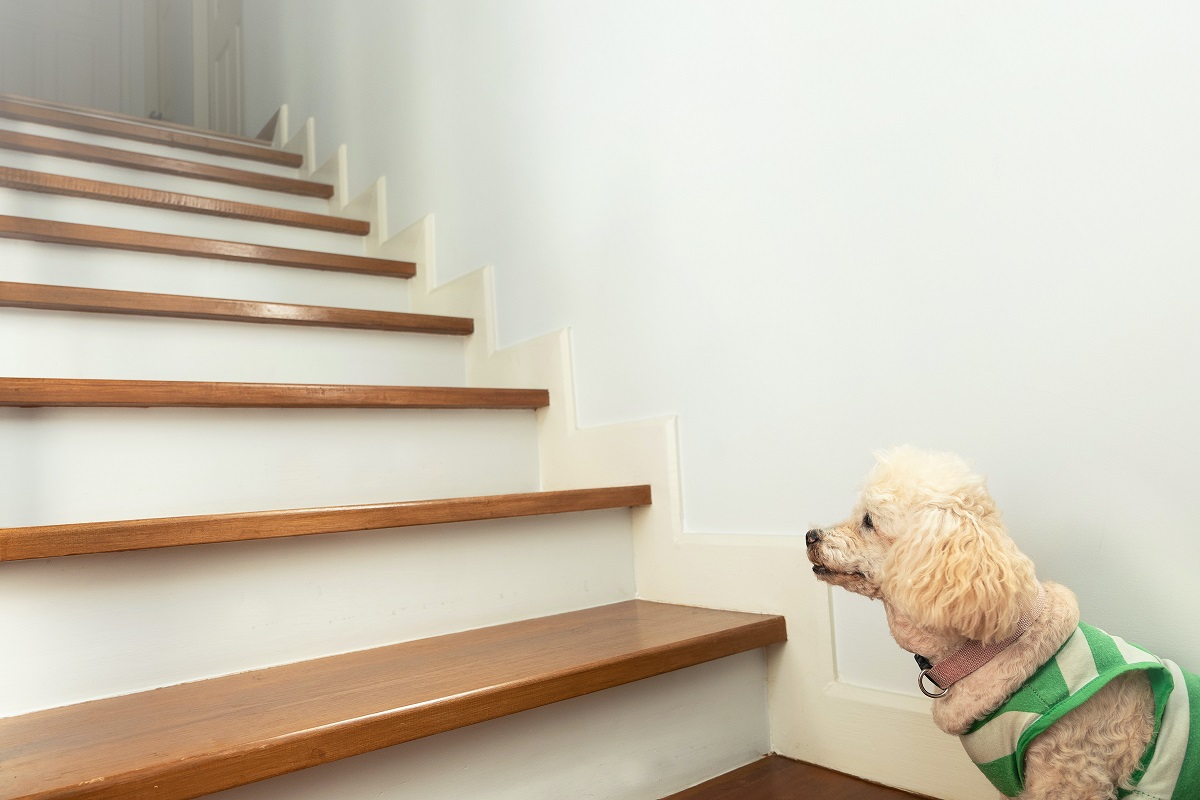

Articles
Why Is My Dog Scared Of Stairs
Modified: December 7, 2023
Discover helpful articles on why your dog may be scared of stairs and learn effective ways to overcome this fear.
(Many of the links in this article redirect to a specific reviewed product. Your purchase of these products through affiliate links helps to generate commission for Storables.com, at no extra cost. Learn more)
Introduction
Many dog owners have come across the perplexing situation of their furry friend being scared of stairs. It can be frustrating and concerning to see your dog hesitate, freeze, or completely refuse to climb up or down the staircase. However, it’s important to remember that this fear is not uncommon among dogs and can be attributed to a variety of reasons.
In this article, we will explore the common reasons behind why dogs may develop a fear of stairs and provide tips on how to help them overcome this fear. So, if you’ve ever wondered why your dog is scared of stairs, keep reading to gain a better understanding and find ways to support your four-legged companion.
Key Takeaways:
- Overcoming a dog’s fear of stairs requires patience, positive reinforcement, and understanding. Tailor your approach to your dog’s specific needs and celebrate every small victory along the way.
- Seeking professional help may be necessary if your dog’s fear of stairs persists or triggers aggressive behavior. Professional trainers can provide targeted guidance and support for your furry friend.
Read more: Why Won’t My Dog Go Up The Stairs
Common reasons for dogs being scared of stairs
There can be several reasons why your dog may be scared of stairs. Here, we will discuss some of the most common causes:
- Past traumatic experience: Dogs, like humans, can develop fears and phobias based on past traumatic experiences. If your dog had a negative experience on the stairs, such as slipping, falling, or getting stuck, it can trigger a fear response and make them wary of using stairs again.
- Lack of exposure or training: If your dog hasn’t been exposed to stairs during their early development stages or hasn’t received proper training on how to navigate them, they may feel uncertain or anxious when encountering stairs for the first time.
- Physical limitations or pain: Dogs with physical limitations, such as arthritis, joint problems, or injuries, may experience pain or discomfort while using stairs. This pain can create a negative association with stairs, leading to fear or avoidance.
- Psychological factors: Some dogs are naturally more anxious or fearful than others. They may have a predisposition to develop fears or phobias, including a fear of stairs. Additionally, dogs that have a general fear of heights or unfamiliar environments may exhibit fear when confronted with stairs.
It’s important to note that every dog is unique, and the exact cause behind their fear of stairs may vary. Understanding the root cause can help you tailor your approach to help them overcome their fear and build confidence.
Past traumatic experience
One of the most common reasons why dogs develop a fear of stairs is a past traumatic experience. Just like humans, dogs can have negative associations with certain situations or environments based on past experiences.
If your dog has had a negative incident on the stairs, such as a slip or fall, getting trapped, or being unable to navigate the steps, it can create a lasting fear or anxiety. Dogs have a strong memory for events that caused them distress, and the fear associated with stairs can persist long after the initial incident.
It’s important to remember that dogs are sensitive creatures and may respond differently to certain situations based on their individual temperament and past experiences. Even a seemingly minor event, such as a loud noise or sudden movement while on the stairs, can be enough to traumatize a dog and create a lasting fear response.
When a dog has a past traumatic experience with stairs, they may exhibit a variety of fear-related behaviors, including freezing in place, shaking, vocalizing their distress, or refusing to go up or down the stairs altogether. These reactions are their way of expressing their fear and discomfort.
To help your dog overcome their fear of stairs due to a past traumatic experience, it’s essential to take a patient and gradual approach. Pushing or forcing them to confront their fear may only intensify their anxiety and make the situation worse.
Instead, start by creating a positive association with the stairs. You can do this by first introducing your dog to the staircase from a distance, allowing them to observe it without any pressure. Offer treats, praise, and gentle encouragement to reinforce positive feelings.
Once your dog feels more comfortable being near the stairs, you can gradually increase the intensity of their exposure. Start by having them take a few steps on the stairs, always offering rewards and encouragement. Gradually increase the number of steps they take over time until they can confidently navigate the entire staircase.
Remember, building trust and confidence takes time. It’s crucial to be patient, understanding, and supportive throughout the process. With consistency and positive reinforcement, you can help your dog overcome their fear of stairs and regain their confidence in navigating them.
Lack of exposure or training
Another common reason why dogs may develop a fear of stairs is a lack of exposure or training during their early development stages. Dogs that have not been introduced to stairs as puppies or have not received proper training on how to navigate them may feel uncertain or anxious when encountering stairs for the first time.
Exposure and socialization at a young age play a crucial role in helping dogs become confident and adaptable to various environments and situations. Introducing your puppy to stairs early on can help them become familiarized with the concept and build positive associations with climbing up and down steps.
If you adopted an adult dog or have a puppy who hasn’t been exposed to stairs, it’s important to approach the situation with patience and positive reinforcement. Forcefully pushing them or attempting to carry them up or down the stairs can further reinforce their fear and anxiety.
Start by allowing your dog to explore the staircase at their own pace and comfort level. Encourage them with treats, toys, or praise to approach the stairs and sniff around. Let them become familiar with the structure and the sensation of being on the steps.
Once your dog feels more comfortable near the stairs, you can slowly introduce the act of climbing or descending the steps. Begin with just a few steps and reward them with treats and praise for each successful attempt. Gradually increase the number of steps they take over time, always reinforcing positive experiences.
Consistency is key when helping your dog overcome their fear due to a lack of exposure or training. Regular practice sessions that focus on positive reinforcement will help build their confidence and gradually alleviate their fear of stairs.
In some cases, professional help from a dog trainer or behaviorist may be beneficial, especially if your dog’s fear of stairs persists despite your best efforts. They can provide specialized guidance and techniques tailored to your dog’s specific needs, helping them overcome their fear more effectively.
Remember, every dog learns at their own pace, and it’s important to be patient and understanding throughout the process. With time, patience, and positive reinforcement, your dog can overcome their fear of stairs and become confident in navigating them.
Physical limitations or pain
Physical limitations or pain can be another significant factor contributing to a dog’s fear of stairs. Dogs with underlying health conditions, injuries, or joint problems may experience discomfort or pain when using stairs, leading to a negative association with them.
Conditions such as arthritis, hip dysplasia, or injuries to the limbs can cause pain and inflammation, making it difficult for dogs to navigate stairs comfortably. The act of climbing up or down steps can put additional strain on their joints or injured areas, exacerbating their discomfort and reinforcing their fear.
If you suspect that your dog’s fear of stairs is due to physical limitations or pain, it’s essential to consult with your veterinarian for a thorough examination and appropriate medical intervention. They can assess your dog’s overall health, identify any underlying conditions, and recommend the necessary treatment or management plan.
In the case of temporary injuries or postoperative recovery, your veterinarian may advise restricting your dog’s access to stairs or providing supportive measures such as ramps or assistive devices to help them navigate inclines more comfortably.
For dogs with chronic conditions like arthritis, pain management becomes crucial. Your veterinarian may prescribe medications or supplements to alleviate pain and inflammation. Additionally, they may recommend physical therapy exercises or alternative treatments like acupuncture or laser therapy to improve mobility and reduce pain.
As your dog’s physical condition improves, you can gradually reintroduce them to stairs under appropriate supervision and guidance from your veterinarian. Taking a gradual approach is crucial to ensure that they are comfortable and not experiencing any pain or discomfort during the process.
Observing your dog closely for any signs of pain or discomfort while using stairs is crucial. If they exhibit signs such as limping, reluctance to put weight on certain limbs, or vocalizing their distress, it’s essential to consult with your veterinarian promptly.
By addressing the underlying physical limitations or pain and providing appropriate support and medical intervention, you can help your dog feel more comfortable and confident in using stairs. Always prioritize your dog’s well-being and consult with professionals for the best course of action based on their individual needs.
Read more: Why Is My Cat Scared Of The Litter Box?
Psychological factors
Psychological factors can play a significant role in a dog’s fear of stairs. Some dogs may have a naturally anxious or fearful disposition, while others may develop fears and phobias due to specific experiences or genetic predispositions.
Dogs with a fear of heights or unfamiliar environments may exhibit fear when confronted with stairs. The unfamiliarity of the steps, the open spaces between them, or the perception of being at a height can trigger their anxiety and cause them to avoid or hesitate on the stairs.
In addition, dogs that have had traumatic experiences or negative associations with other types of surfaces or objects may generalize their fear to stairs as well. For example, a dog that had a negative experience with a slippery surface may develop a fear of all surfaces that resemble it, including steps.
It’s important to approach a dog’s fear of stairs with compassion and understanding. Forcing or pushing them to face their fear can intensify their anxiety and make the situation worse. Instead, take a patient and gradual approach to help them overcome their fear.
Creating a positive association with stairs is crucial. Start by allowing your dog to approach the stairs at their own pace, offering treats, praise, and rewards for any brave or curious behavior. Encouraging them with gentle words and gestures can also help build their confidence.
Gradual exposure to stairs is key. Begin by allowing your dog to explore the stairs without any pressure. Let them sniff and investigate the area, rewarding them for their bravery. As their comfort level increases, you can slowly introduce the act of climbing or descending a few steps, always reinforcing positive experiences.
Consistency, patience, and positive reinforcement are essential when addressing a dog’s fear due to psychological factors. It may take time for them to build trust and overcome their fear, so be prepared for setbacks and progress at their own pace.
If your dog’s fear of stairs persists or their anxiety worsens despite your efforts, it may be beneficial to seek assistance from a professional dog trainer or behaviorist. They can provide specialized techniques and guidance tailored to your dog’s specific needs, helping them overcome their fear in a safe and controlled manner.
Remember, every dog is unique, and their fears and anxieties should be approached with empathy and patience. With time, understanding, and positive reinforcement, you can help your dog overcome their fear of stairs and build their confidence in navigating them.
Start by making the stairs a positive experience for your dog. Use treats and praise to encourage them to approach and eventually climb the stairs. Take it slow and be patient, and never force them to go up or down. Gradually build their confidence and make the stairs a fun and rewarding challenge.
Tips to help your dog overcome their fear of stairs
Seeing your dog scared of stairs is distressing, but there are several strategies you can employ to help them overcome their fear. Here are some tips to guide you:
- Gradual desensitization and counter conditioning: Start by gradually exposing your dog to the stairs at their own pace. Begin with allowing them to approach and sniff the stairs from a distance, offering treats and praise for any positive interaction. Gradually increase their proximity to the stairs and reward them for any signs of bravery or curiosity. This process, known as desensitization, helps your dog build positive associations with the stairs.
- Positive reinforcement and rewards: Use positive reinforcement techniques to reward your dog for any progress they make with the stairs. Offer treats, praise, and affection whenever they exhibit bravery or take even small steps towards using the stairs. Positive reinforcement helps reinforce positive behaviors and helps your dog build confidence in their ability to navigate the stairs.
- Provide a calm and nurturing environment: Create a calm and safe environment around the stairs to help alleviate your dog’s anxiety. Remove any potential distractions or loud noises that may further contribute to their fear. Ensure that the area is well-lit and comfortable for your dog to move around in.
- Patience and understanding: Overcoming fear takes time, so be patient with your dog. Understand that progress may be slow, and setbacks are possible. Avoid rushing or forcing your dog to confront their fear, as it can intensify their anxiety. Instead, focus on building their trust and gently encouraging them throughout the process.
- Seek professional help if needed: If your dog’s fear of stairs persists or worsens despite your efforts, it may be beneficial to seek professional help from a dog trainer or behaviorist. They can assess your dog’s specific needs and provide personalized guidance and techniques to help them overcome their fear more effectively.
Remember, every dog is unique, and there is no one-size-fits-all approach. Tailor your strategies to your dog’s specific needs, temperament, and comfort level. With consistency, positive reinforcement, and a supportive approach, you can help your dog overcome their fear of stairs and regain their confidence in navigating them.
Gradual desensitization and counter conditioning:
One effective approach to help your dog overcome their fear of stairs is through gradual desensitization and counter conditioning. This technique involves systematically exposing your dog to the stairs in a controlled and positive manner, allowing them to build new, positive associations with the previously feared situation.
Here are some steps to follow for gradual desensitization and counter conditioning:
- Start by creating a calm and inviting environment around the stairs. Remove any potential distractions or sources of fear.
- Begin by allowing your dog to approach the stairs from a comfortable distance. Use positive reinforcement techniques, such as treats or praise, to reward them for any positive behaviors or signs of curiosity towards the stairs.
- Gradually decrease the distance between your dog and the stairs as they become more comfortable. Each time they show signs of relaxation or curiosity, reward them with treats and praise.
- Once your dog is comfortable being near the stairs, you can introduce new steps. For example, place a treat just a few steps away from the bottom of the staircase and encourage your dog to approach and retrieve it.
- Continue this process, gradually increasing the number of steps your dog takes. Offer plenty of positive reinforcement and rewards for each successful attempt.
- Avoid pushing or forcing your dog to go beyond their comfort zone. Respect their individual pace and always maintain a positive and supportive atmosphere.
- If at any point your dog shows signs of fear or anxiety, take a step back and reintroduce the stairs at a more comfortable level for them. Patience and consistency are key.
- Repeat these steps over multiple sessions, gradually increasing the duration and difficulty level of each training session. Eventually, your dog should gain confidence and become more comfortable with using the stairs.
Remember, the goal of gradual desensitization and counter conditioning is to help your dog build positive associations with the stairs. The process may take time, so be patient and celebrate small victories along the way.
If your dog’s fear persists or worsens despite your efforts, consider consulting with a professional dog trainer or behaviorist. They can provide further guidance, individualized strategies, and support to help your dog overcome their fear of stairs effectively.
Each dog is unique, so it’s important to tailor your approach to their specific needs and comfort level. With time, patience, and positive reinforcement, you can help your dog overcome their fear of stairs and empower them to confidently navigate them.
Positive reinforcement and rewards:
Positive reinforcement is a powerful training technique that can help your dog overcome their fear of stairs by associating the experience with positive emotions and rewards. Rewarding your dog for their brave and confident behavior encourages them to repeat those actions, gradually building their confidence and reducing their fear. Here are some tips on using positive reinforcement to help your dog overcome their fear of stairs:
- Start by identifying what motivates and rewards your dog. Different dogs have different preferences, so it’s important to find what works best for your furry friend. Treats, praise, toys, or petting can all serve as positive reinforcement.
- When introducing your dog to the stairs, offer plenty of positive reinforcement for any behavior that shows confidence or curiosity. Use treats, praise, and other rewards to express your approval and encourage them to continue exploring the stairs.
- If your dog takes a step towards the stairs or even just looks at them without fear, reward them immediately. The timing of the reward is crucial to create a strong association between their behavior and the positive reinforcement.
- As your dog becomes more comfortable with being near the stairs, gradually increase the criteria for receiving the reward. For example, reward them only when they put one paw on the first step or take a couple of steps up the staircase.
- Consistency is key. Always reward your dog consistently when they display brave or positive behavior around the stairs. This positive reinforcement helps them develop confidence and associate the stairs with a positive experience.
- Avoid using punishments or negative reinforcement when your dog shows fear or hesitation. Punishments can intensify their fear and inhibit their progress. Instead, focus on rewarding and encouraging positive behaviors.
- Be patient and recognize small steps of progress. Some dogs may take longer to overcome their fear of stairs, but it’s important to celebrate every achievement along the way. Even a small improvement is a step in the right direction.
- Continue to offer rewards and positive reinforcement as your dog gains more confidence on the stairs. Gradually reduce the frequency of treats or rewards, but always give praise to acknowledge their progress.
- Remember, positive reinforcement should always be paired with patience, understanding, and a supportive environment. Avoid rushing your dog or overwhelming them with intense training sessions.
By consistently using positive reinforcement techniques, you can help your dog associate the stairs with a positive, rewarding experience. Over time, they will become more confident and comfortable using the stairs, and their fear will diminish.
If you’re unsure about how to approach positive reinforcement or want additional guidance, consider consulting a professional dog trainer or behaviorist. They can provide you with specialized training techniques and advice tailored to your dog’s specific needs.
With patience, consistency, and plenty of positive reinforcement, you can effectively help your dog overcome their fear of stairs and enable them to navigate them confidently.
Read more: Why Is My Dog Licking The Floor
Seek professional help if needed:
While many dogs can overcome their fear of stairs with patient, consistent training and positive reinforcement, there are cases where seeking professional help may be necessary. A professional dog trainer or behaviorist can provide specialized guidance and support to address your dog’s specific needs. Here are a few reasons why you might consider seeking professional help:
- Persistent fear or severe anxiety: If your dog’s fear of stairs persists despite your best efforts, or if their anxiety escalates to a point where it severely impacts their quality of life, it’s important to consult with a professional. They can assess your dog’s behavior, identify the underlying causes, and develop a targeted training plan to address their fear effectively.
- Aggression or reactive behavior: In some cases, a dog’s fear of stairs may trigger aggressive or reactive behavior, such as growling, barking, or lunging. This can pose a safety risk for both your dog and those around them. A professional behaviorist can help you understand the root cause of your dog’s aggression and provide appropriate strategies to manage and modify their behavior.
- Complex underlying issues: If your dog’s fear of stairs is accompanied by other behavioral problems or underlying conditions, such as separation anxiety or medical issues, it may require a comprehensive approach that addresses these issues concurrently. A professional can formulate a customized plan that takes into account all aspects of your dog’s well-being.
- Expert knowledge and experience: Professional dog trainers and behaviorists possess extensive knowledge and experience in dealing with various behavioral issues, including fear of stairs. They can provide you with expert guidance, advanced training techniques, and insights based on their expertise. This professional support can enhance the effectiveness of your training efforts.
- Peace of mind: Seeking professional help can provide you with peace of mind that you are taking the best course of action for your dog. They can provide reassurance, answer any questions you may have, and offer ongoing support throughout the training process.
When choosing a professional, look for someone who uses positive reinforcement-based training methods and has experience in behavior modification. They should be able to assess your dog’s specific situation, develop a tailored training plan, and guide you through the process with empathy and understanding.
Remember, seeking professional help is not a sign of failure but rather a proactive step towards helping your dog overcome their fear of stairs. With the right guidance, you can provide your furry companion with the support they need to build confidence and conquer their fear.
Conclusion
A fear of stairs in dogs is not uncommon and can be attributed to various reasons, including past traumatic experiences, lack of exposure or training, physical limitations or pain, and psychological factors. Understanding the root cause of your dog’s fear can help guide your approach towards helping them overcome it.
Through techniques such as gradual desensitization and counter conditioning, positive reinforcement, and creating a supportive environment, you can help your dog build confidence and alleviate their fear of stairs. Patience, consistency, and understanding are key as every dog learns at their own pace.
However, in some cases, seeking professional help from a dog trainer or behaviorist may be necessary. They can provide specialized guidance, develop a targeted training plan, and address any underlying behavioral issues or complex challenges that may be contributing to your dog’s fear of stairs.
Remember, your dog’s well-being should always be the top priority. Approach the training process with empathy and patience, celebrating each small step of progress. With time, effort, and the right approach, you can help your furry friend overcome their fear of stairs and regain their confidence in navigating this common household obstacle.
As a responsible dog owner, providing your dog with a safe and supportive environment is essential. By addressing their fear of stairs, you are creating opportunities for them to explore their surroundings confidently and enjoy all that life has to offer.
Always remember to consult with professionals, such as veterinarians, dog trainers, or behaviorists, to ensure that you are providing the best and most appropriate care for your dog. Their expertise and guidance can greatly assist in your journey to help your dog overcome their fear of stairs.
Frequently Asked Questions about Why Is My Dog Scared Of Stairs
Was this page helpful?
At Storables.com, we guarantee accurate and reliable information. Our content, validated by Expert Board Contributors, is crafted following stringent Editorial Policies. We're committed to providing you with well-researched, expert-backed insights for all your informational needs.







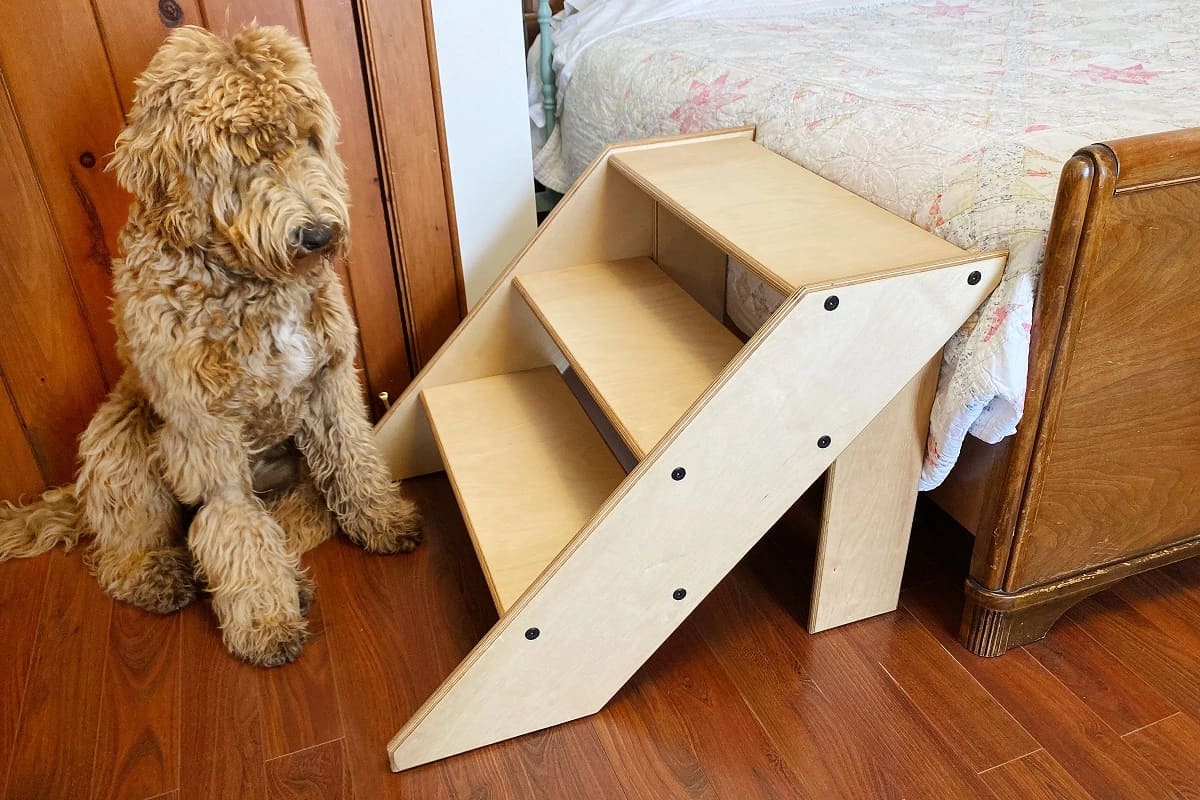

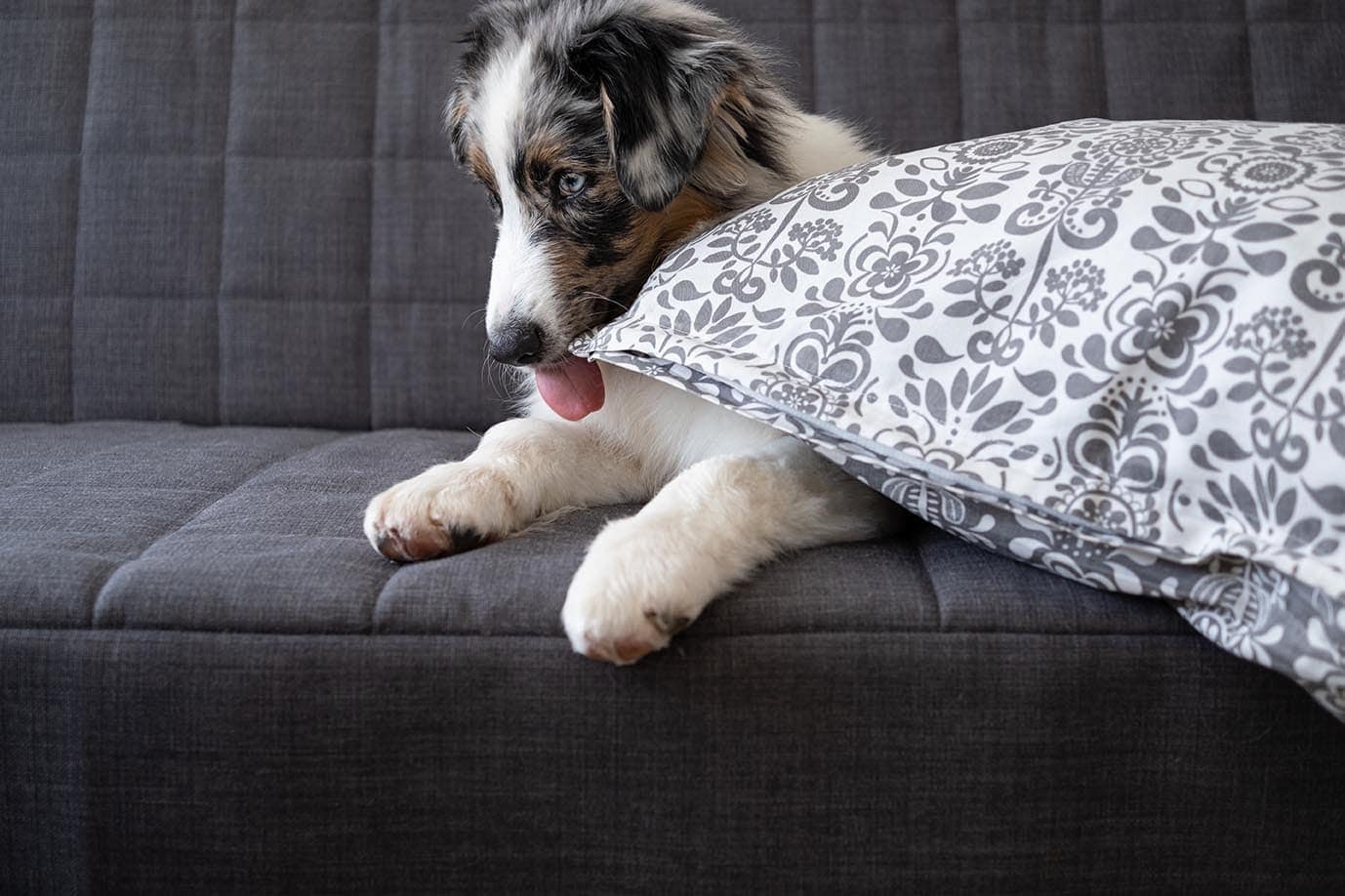
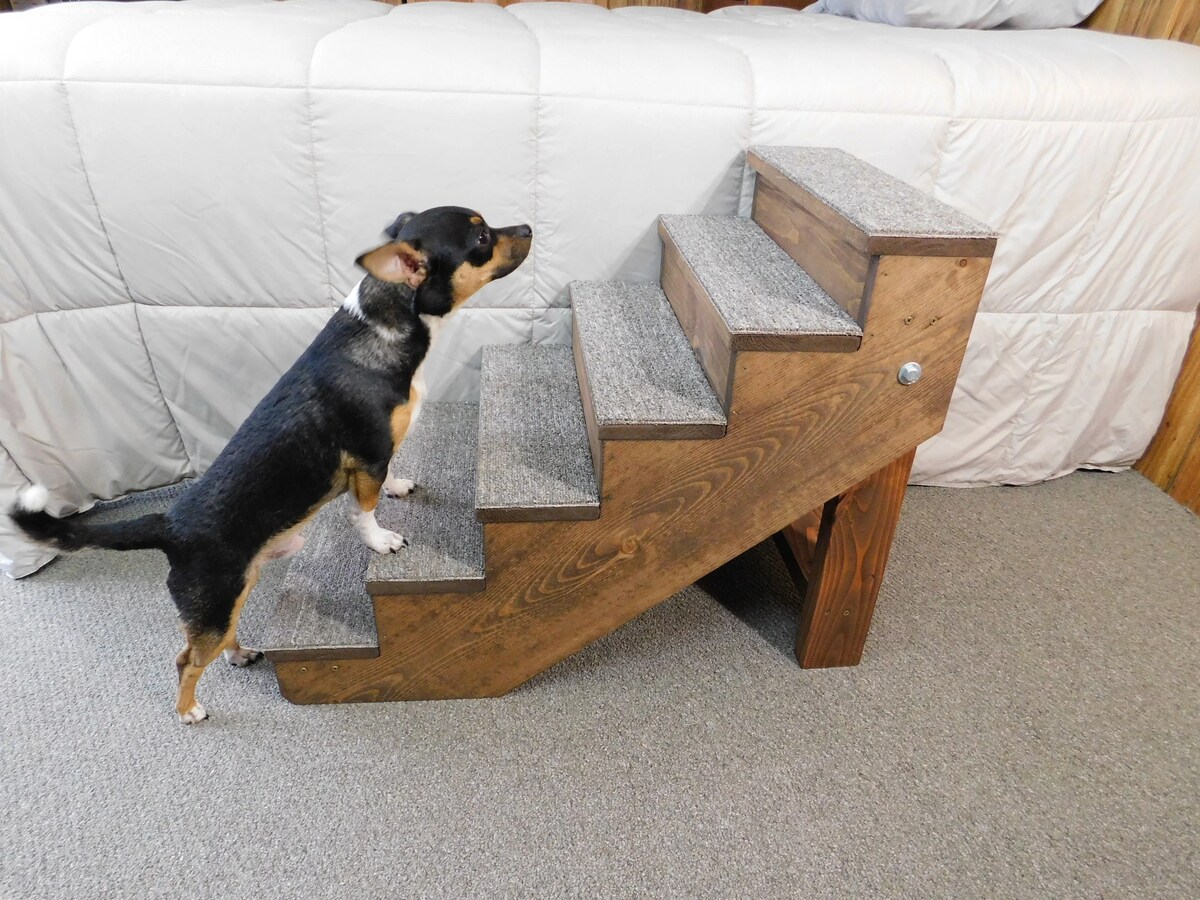
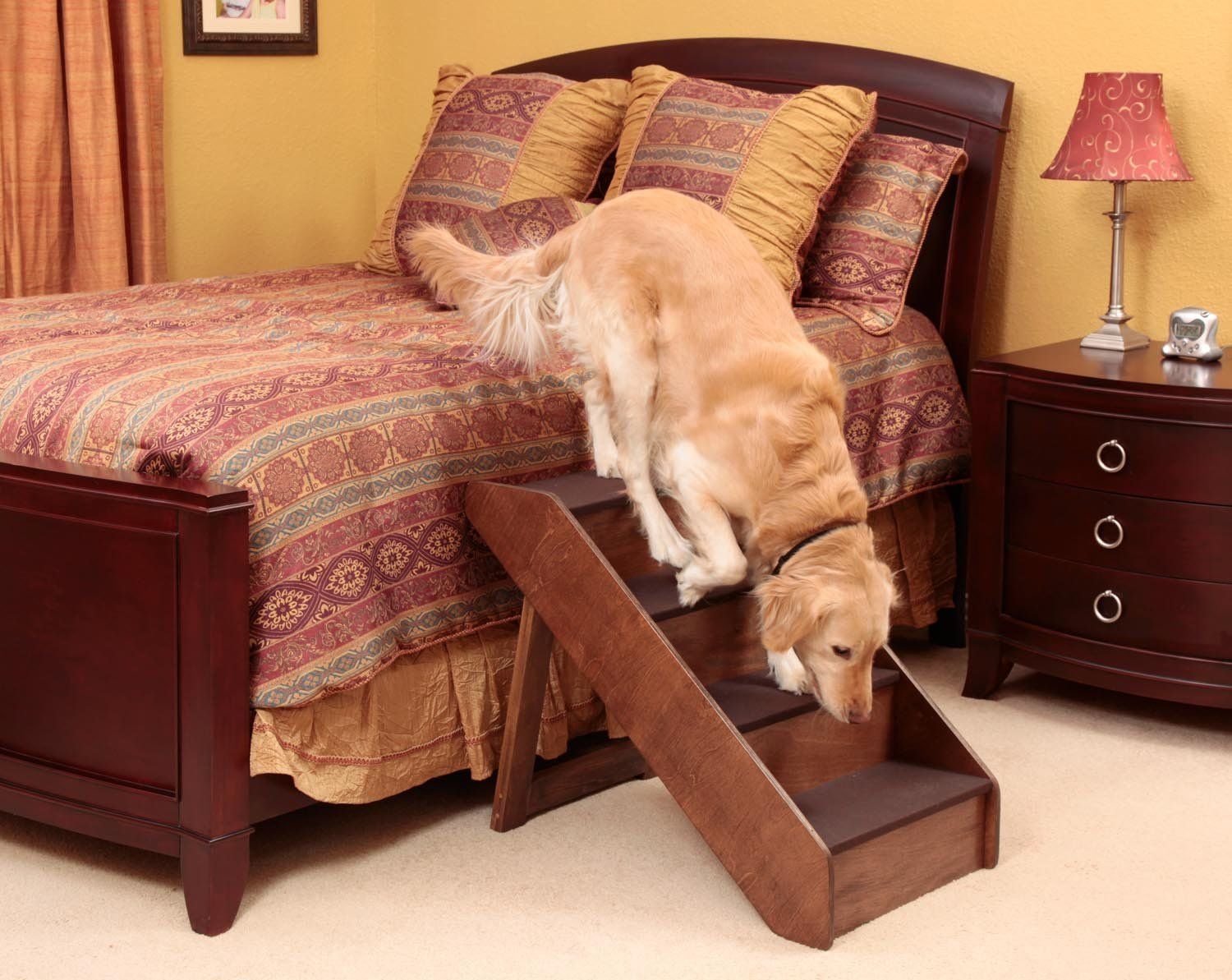


0 thoughts on “Why Is My Dog Scared Of Stairs”